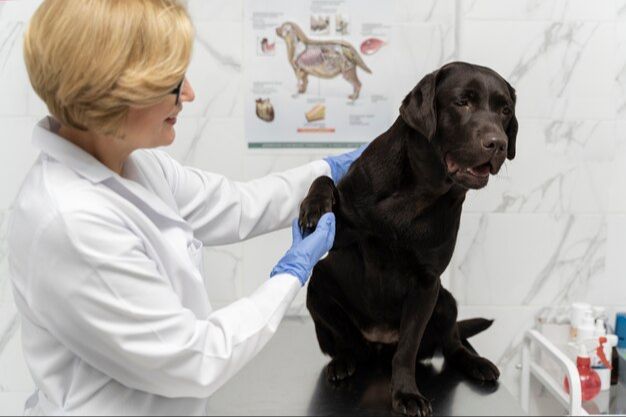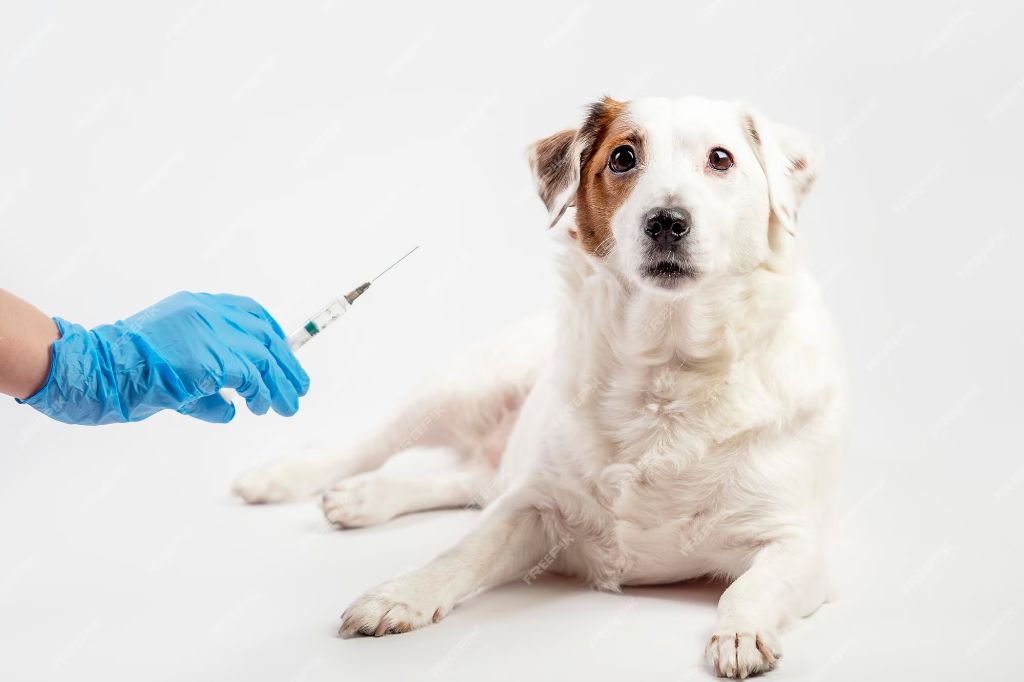Introduction
Cancer is unfortunately very common in dogs, with some studies estimating that 1 in 3 dogs will develop cancer during their lifetime. The lifespan of a dog diagnosed with cancer depends on many factors like the type of cancer, the stage at diagnosis, the age and health of the dog, and the treatment plan. While some cancers like lymphoma can have survival times over a year with treatment, more aggressive cancers like hemangiosarcoma may only have survival times of a few months even with treatment. In general, early detection and treatment is key to maximize a dog’s remaining lifespan after a cancer diagnosis. However, cancer treatment also carries risks and side effects that must be balanced with quality of life. With treatment, care, and love, many dogs can still have many happy months or years ahead even after a cancer diagnosis.
Types of Cancer in Dogs
Dogs can develop a variety of different types of cancer, just like humans. Some of the most common cancers seen in dogs include:
- Lymphoma – Cancer of the lymphocytes, a type of white blood cell. This is one of the most frequently seen cancers in dogs.
- Mast Cell Tumors – Cancer of mast cells. Mast cells play an important role in the immune system. These tumors most often form nodules or masses in the skin.
- Melanoma – Cancer of the pigment-producing cells called melanocytes. Melanoma most often affects the mouth, lips, eyelids and toes.
- Osteosarcoma – Bone cancer, most often affecting the limbs of large and giant breed dogs.
- Hemangiosarcoma – Cancer of the blood vessels. It most commonly affects the spleen, liver, and heart.
- Mammary Gland Tumors – Tumors of the mammary glands. Female dogs that are not spayed have a much higher risk.

Other common cancers seen in dogs include brain tumors, bladder cancer, prostate cancer, testicular cancer, nasal cancer and oral cancer.
Diagnosing Dog Cancer
Detecting cancer in dogs begins with a veterinary examination. The vet will do a thorough physical check for lumps, bumps, or other abnormalities and will review the dog’s medical history.
If cancer is suspected, the vet will recommend further diagnostic tests. These may include:
-
Blood tests – Analyzing blood can reveal abnormalities associated with cancers like leukemia and lymphoma.
-
Urine tests – Urine contains cancer markers for bladder and prostate tumors.
-
Biopsies – Removing a small sample of abnormal cells or tissue for examination under a microscope.
-
Imaging tests – X-rays, ultrasound, CT scans, and MRIs create images that detect tumors in the body.
-
Endoscopy – Inserting a tube with a camera into the body to view internal organs.
These tests along with analysis in a veterinary laboratory allow vets to definitively diagnose cancer in dogs. They also help determine the type, location, and stage of cancer to guide treatment options.
Stages of Cancer
Cancer in dogs is staged to describe the extent and spread of the disease. Staging helps determine the course of treatment and prognosis. There are different staging systems depending on the type of cancer.
The most common staging system is:

Stage 1 – The tumor is localized and has not spread to lymph nodes or other areas of the body. This stage often has the best prognosis if treated promptly.
Stage 2 – The tumor is larger than in stage 1 but has not spread. Prognosis is still often good with treatment.
Stage 3 – The cancer has spread to local lymph nodes but not distant sites. More intensive treatment is needed.
Stage 4 – The cancer has metastasized to distant lymph nodes, organs, or tissues. Treatment is more difficult and prognosis poorer at this stage.
Some cancers like lymphoma also divide stages from ‘a’ to ‘b’ based on whether the dog is exhibiting clinical signs. Dogs with cancer that has advanced stage have a more guarded prognosis compared to lower stages.
Treatment Options
Treatment options for dogs with cancer typically fall into three main categories: surgery, chemotherapy, and radiation therapy. The specific treatment plan will depend on the type of cancer, its location, size, and stage, as well as the dog’s overall health.
Surgery is often the first line of treatment and can cure cancer if it’s caught early enough and fully removed. Surgery removes the tumor and surrounding tissues. In some cases, like bone cancer, limb amputation may be necessary. Surgery carries risks like infection, bleeding, and anesthesia complications.
Chemotherapy uses anti-cancer drugs to kill cancer cells. It may shrink tumors before surgery or target any remaining cells after surgery. Chemo can have side effects like vomiting, diarrhea, and fatigue but is often well tolerated in dogs. Milder metronomic chemotherapy may also be used.
Radiation therapy uses high energy beams to kill cancer cells and shrink tumors. It requires specialized equipment and expertise. Radiation is often used after surgery when chemotherapy isn’t effective. Side effects can include skin irritation and fatigue.
Other treatments like immunotherapy to boost the immune system or medications to manage pain, nausea, and other symptoms may supplement the main treatments. Supportive care is crucial for managing side effects and quality of life.
Side Effects of Treatment
While cancer treatments like chemotherapy and radiation can help prolong a dog’s life, they often come with difficult side effects. Some common side effects dog owners should be aware of include:

Appetite changes – Chemotherapy can cause nausea and changes in taste that may make your dog not want to eat or drink. Working with your vet to find foods appealing to your dog can help keep their strength up. Anti-nausea medication may also help.
Gastrointestinal issues – Vomiting, diarrhea and other GI problems are common during cancer treatment. Your vet can prescribe medications to help control these side effects. Keeping your dog well-hydrated is important.
Fatigue – Cancer treatments can leave dogs feeling very tired and weak. Allowing plenty of rest and not overexerting your dog is important. Short, gentle walks and playtime may help keep their spirits up.
Hair loss – Chemotherapy often causes fur loss. Your dog may feel cold, so provide comfy beds with warm blankets. Protect their skin from sunburn when outdoors. The fur will usually regrow after treatment ends.
Increased infections – Chemotherapy can lower white blood cell counts, weakening the immune system. Prompt antibiotic treatment of any infections is crucial. Cleaning skin folds, washing food bowls, and keeping your home clean helps prevent infections.
While side effects can be difficult to manage, remember they are temporary and working closely with your vet to provide the best supportive care will help your dog through their treatment.
Prognosis by Cancer Type
The prognosis for dogs with cancer can vary significantly depending on the type of cancer they have. Here is an overview of prognoses for some of the most common cancers in dogs:
Lymphoma: With treatment, the median survival time for dogs with lymphoma is 6-12 months. However, around 25% of dogs can achieve complete remission and live 2-3 years or longer.
Mast Cell Tumors: The prognosis depends on the grade of the tumor. For grade I tumors, surgical removal leads to a cure in most dogs. Grade II and III tumors have a less favorable prognosis, with median survival times of around 12-18 months with treatment.
Melanoma: The prognosis for oral melanoma is poor, with a median survival time of 3-6 months even with treatment. For other forms of melanoma, dogs treated with surgery and follow-up treatment can live 1-2 years.
Osteosarcoma: The prognosis for osteosarcoma treated with amputation and chemotherapy is approximately 12 months. Only around 20% of dogs live 2 or more years after diagnosis.
Hemangiosarcoma: Hemangiosarcoma has a very poor prognosis. Even with treatment, median survival is only around 3-6 months. Less than 10% of dogs live beyond 12 months.
Mammary Gland Tumors: The prognosis for malignant mammary tumors depends on how early they are detected and if they have spread. Dogs with low-grade localized tumors that are surgically removed can live years. Higher grade or metastatic tumors have a median survival of 6-12 months with treatment.
Caring for a Dog with Cancer
Caring for a dog undergoing cancer treatment can be challenging, but there are things you can do to make your dog as comfortable as possible:
- Give your dog soft, comfortable bedding away from high-traffic areas of your home to allow undisturbed rest.
- Maintain a schedule for feeding, walks, and playtime to give your dog a sense of normalcy.
- Monitor your dog’s appetite and make adjustments if needed – dogs undergoing treatment may experience nausea.
- Keep your dog well-groomed and clean – this can improve their mood and quality of life.
- Limit strenuous activity to preserve your dog’s energy for healing.
- Make water easily accessible to keep your dog hydrated.
- Watch for signs of pain or discomfort and report them to your vet.
- Give prescribed medications properly and monitor side effects.
- Keep follow-up vet appointments even when your dog seems to be doing well.
- Shower your dog with affection and quality time together within their capability.
Caring for a dog with cancer takes diligence and patience. Working closely with your vet and following their recommendations can help provide the best possible care during this difficult time.
Improving Quality of Life
There are many things you can do to keep your dog as happy and comfortable as possible while dealing with cancer:
- Keep up with pain medication – Work closely with your vet to ensure your dog is getting adequate pain control. Many pain medications for dogs are very effective at managing cancer pain.
- Consider alternative therapies – Acupuncture, massage therapy, CBD oil, and other complementary treatments may help with pain, nausea, and anxiety in dogs with cancer. Always check with your vet before starting anything new.
- Adapt their environment – Provide soft bedding, ramps, or lift harnesses to help a dog with mobility issues. Keep their space clean and free of clutter.
- Maintain a routine – Sticking to a regular schedule of feeding, play time, rest, and walks can provide comfort and stability.
- Watch their diet – Cook fresh food or switch to a high-quality commercial cancer diet to keep their weight stable. Avoid rich foods that may cause stomach upset.
- Stay social – Spend quality time together through gentle play, car rides, or cuddling. Consider a pet sitter or doggy daycare if you can’t be home as much.
- Try supplements – Fish oil, probiotics and multivitamins may help with energy, digestion, and immune function.
- Control infections – Keep wounds and mouths clean. Talk to your vet about antibiotic use if needed.
- Provide mental stimulation – Food puzzles, chew toys, training games, and changing up their toys can keep their mind active and engaged.
- Monitor closely – Track their symptoms, appetite, activity level and bowel movements. Notify your vet promptly about any significant changes.

While managing cancer in dogs can be challenging, focusing on quality of life allows you to maximize the happy times you have left together.
Saying Goodbye
Deciding when to euthanize a dog with cancer is an incredibly difficult decision that takes a major emotional toll. As a pet owner, you want to avoid prolonging suffering while also not cutting your dog’s life short unnecessarily. There are several signs that indicate your dog’s quality of life is declining and that euthanasia may be the most humane option:
- Loss of interest in food and water
- Difficulty with basic functions like walking, standing, or going to the bathroom
- Signs of constant pain or discomfort
- Lack of joy or inability to respond to stimuli
- Seizures or sensory deficits
- Tumors that ulcerate or impede natural body functions
While euthanasia is often framed as “giving up,” it can also be viewed as the final act of love we give our pets by relieving their suffering. Make sure to discuss options honestly with your veterinarian and involve your family in the decision-making process. You may also consider in-home euthanasia or hospice care to allow your dog to pass away comfortably at home surrounded by loved ones.
After your dog passes, allow yourself to fully grieve the loss of a dear friend. Consider holding a memorial service, planting a tree in your pet’s honor, or framing special photos. Although this is an extremely difficult time, cherish the happy memories you shared with your beloved dog.